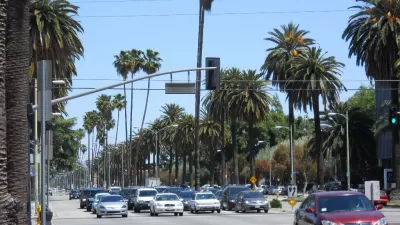Richard Florida interviews Jeff Speck about his new and highly praised book "Walkable City." The two authors discuss why cities should become more walkable to meet the needs of the "Walking Generation."
"The General Theory of Walkability explains how, to attract pedestrians, a place has to provide a walk that is simultaneously useful, safe, comfortable and interesting," says Speck. "This is extraordinarily difficult in most of our (driving) cities, and can only be accomplished when resources are concentrated where they can do the most good, rather than dispersed more evenhandedly across the city, which is the tendency." The cities that are becoming more walkable "understand that their sustainability (economic, health, and environmental) depends on it" and "want to attract and retain young, educated adults." 64 percent of college graduates now decide where they want to live first, and 77 percent want to live in America's urban cores "with ready access to nature, bike lanes, good transit, and street life."
Another related concept is the "Walkability Dividend" in which economist Joe Cortright showed how Portland's "urban growth boundary, coupled with its investments in bike lanes and transit, resulted in a remarkable phenomenon: Portland's per-capita vehicle miles traveled peaked in 1996." Portlanders drive 20 percent less than the national average, resulting in financial and time savings, cleaner air, and slimmer waistlines. From the other side, Speck points out that "[t]he typical American 'working' family now pays more for transportation than for housing" because "so many families found themselves not only underwater on their mortgages but also unable to afford the thirteen car trips per day generated by the average exurban homestead."
In his book Walkable City, Speck reconsiders the agenda he and his co-authors advanced in Suburban Nation. Why invest money and energy in building better suburbs, he says in response to a question from Florida, "when we have hundreds of historic downtown cores with underused infrastructure," "when demographic data tells us that 88 percent of the next 100 million American households will be childless," "when the epidemiologists are telling us that people live longer, healthier lives in cities and towns than in sprawl," and "when the environmentalists are telling us that New Yorkers have one-third the carbon footprint of the typical suburbanite"?
FULL STORY: Toward the Walkable City

Alabama: Trump Terminates Settlements for Black Communities Harmed By Raw Sewage
Trump deemed the landmark civil rights agreement “illegal DEI and environmental justice policy.”

Study: Maui’s Plan to Convert Vacation Rentals to Long-Term Housing Could Cause Nearly $1 Billion Economic Loss
The plan would reduce visitor accommodation by 25% resulting in 1,900 jobs lost.

Planetizen Federal Action Tracker
A weekly monitor of how Trump’s orders and actions are impacting planners and planning in America.

Wind Energy on the Rise Despite Federal Policy Reversal
The Trump administration is revoking federal support for renewable energy, but demand for new projects continues unabated.

Passengers Flock to Caltrain After Electrification
The new electric trains are running faster and more reliably, leading to strong ridership growth on the Bay Area rail system.

Texas Churches Rally Behind ‘Yes in God’s Back Yard’ Legislation
Religious leaders want the state to reduce zoning regulations to streamline leasing church-owned land to housing developers.
Urban Design for Planners 1: Software Tools
This six-course series explores essential urban design concepts using open source software and equips planners with the tools they need to participate fully in the urban design process.
Planning for Universal Design
Learn the tools for implementing Universal Design in planning regulations.
Caltrans
Smith Gee Studio
Institute for Housing and Urban Development Studies (IHS)
City of Grandview
Harvard GSD Executive Education
Toledo-Lucas County Plan Commissions
Salt Lake City
NYU Wagner Graduate School of Public Service





























